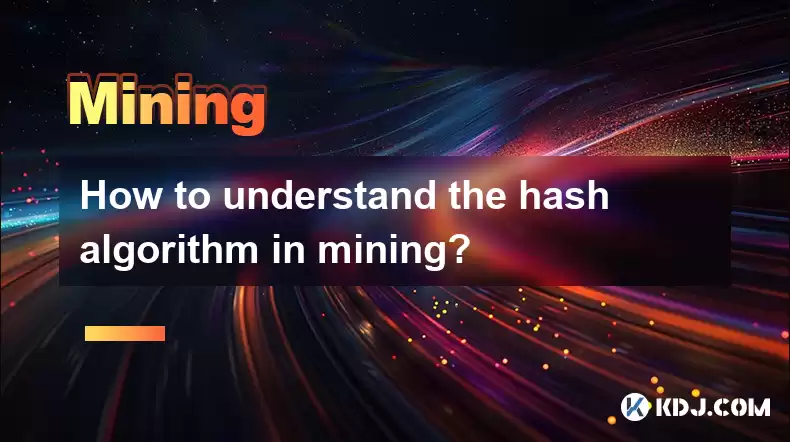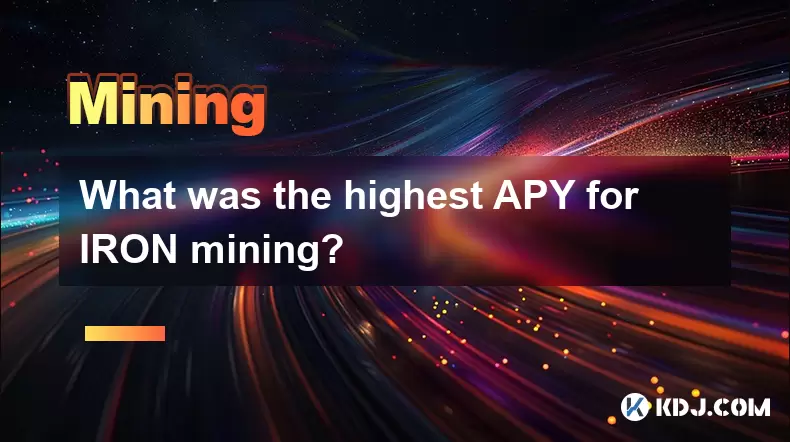-
 Bitcoin
Bitcoin $115000
0.12% -
 Ethereum
Ethereum $3701
4.50% -
 XRP
XRP $3.081
2.99% -
 Tether USDt
Tether USDt $0.0000
-0.01% -
 BNB
BNB $767.9
1.45% -
 Solana
Solana $169.5
3.13% -
 USDC
USDC $0.9999
0.01% -
 Dogecoin
Dogecoin $0.2106
4.30% -
 TRON
TRON $0.3334
1.62% -
 Cardano
Cardano $0.7564
2.54% -
 Stellar
Stellar $0.4165
0.76% -
 Hyperliquid
Hyperliquid $38.75
0.25% -
 Sui
Sui $3.593
3.00% -
 Chainlink
Chainlink $17.08
3.59% -
 Bitcoin Cash
Bitcoin Cash $573.6
4.35% -
 Hedera
Hedera $0.2508
-0.84% -
 Avalanche
Avalanche $23.07
6.46% -
 Ethena USDe
Ethena USDe $1.001
-0.02% -
 Litecoin
Litecoin $120.8
8.17% -
 UNUS SED LEO
UNUS SED LEO $8.943
-0.32% -
 Toncoin
Toncoin $3.400
-5.60% -
 Shiba Inu
Shiba Inu $0.00001255
1.54% -
 Uniswap
Uniswap $9.908
6.32% -
 Polkadot
Polkadot $3.718
2.10% -
 Monero
Monero $303.0
-0.74% -
 Dai
Dai $0.9999
-0.02% -
 Bitget Token
Bitget Token $4.392
0.91% -
 Cronos
Cronos $0.1403
6.31% -
 Pepe
Pepe $0.00001076
1.13% -
 Aave
Aave $267.2
1.80%
How to understand the hash algorithm in mining?
Hash algorithms secure blockchain transactions in mining, with miners using them to solve puzzles and add blocks, impacting difficulty and energy use.
Apr 10, 2025 at 05:28 am

Understanding the hash algorithm in mining is crucial for anyone involved in the cryptocurrency space, particularly those interested in the mining process. The hash algorithm is a fundamental component of blockchain technology, ensuring the security and integrity of transactions. In this article, we will delve into the intricacies of hash algorithms, their role in mining, and how they contribute to the overall functionality of cryptocurrencies.
What is a Hash Algorithm?
A hash algorithm, also known as a hash function, is a mathematical algorithm that takes an input, or 'message,' and returns a fixed-size string of bytes, typically used to represent the input in a condensed form. This output is known as a hash value or digest. The primary characteristics of a hash algorithm include:
- Deterministic: The same input will always produce the same output.
- Quick to compute: The hash function should be able to process the input rapidly.
- One-way function: It should be computationally infeasible to reverse-engineer the original input from the hash value.
- Fixed output size: Regardless of the input size, the output will always be of a fixed length.
- Collision-resistant: It should be extremely difficult to find two different inputs that produce the same output hash.
In the context of cryptocurrency mining, hash algorithms are used to secure the blockchain by creating a unique identifier for each block of transactions.
The Role of Hash Algorithms in Mining
In cryptocurrency mining, the hash algorithm plays a pivotal role in the process of adding new blocks to the blockchain. Miners compete to solve a complex mathematical puzzle, which involves finding a hash that meets specific criteria set by the network. This process is known as Proof of Work (PoW).
- Block Creation: Miners collect a set of unconfirmed transactions and form them into a block.
- Nonce and Hash: Miners then add a nonce (a number used only once) to the block and run it through the hash algorithm.
- Difficulty Target: The resulting hash must be below a certain target value, known as the difficulty target, to be considered valid.
- Competition: The first miner to find a valid hash gets to add the block to the blockchain and is rewarded with newly minted cryptocurrency and transaction fees.
The hash algorithm ensures that the process is fair and secure, as it is extremely difficult to predict or manipulate the outcome of the hash function.
Common Hash Algorithms in Cryptocurrency Mining
Several hash algorithms are used in cryptocurrency mining, each with its own characteristics and applications. Some of the most common include:
- SHA-256: Used by Bitcoin and other cryptocurrencies, SHA-256 (Secure Hash Algorithm 256-bit) produces a 256-bit hash value. It is known for its security and is widely used in various applications beyond cryptocurrency.
- Scrypt: Designed to be more memory-intensive, Scrypt is used by Litecoin and other cryptocurrencies. It aims to be more resistant to specialized hardware (ASICs) and more accessible to CPU and GPU miners.
- Ethash: Used by Ethereum, Ethash is designed to be ASIC-resistant and to encourage decentralized mining. It requires a significant amount of memory to compute, making it more suitable for GPU mining.
- X11: A chain of 11 different hash functions, X11 is used by Dash and other cryptocurrencies. It aims to provide a balance between security and energy efficiency.
Each of these algorithms has its own set of advantages and challenges, influencing the mining landscape and the security of the respective cryptocurrencies.
How Miners Use Hash Algorithms
Miners use hash algorithms to validate and secure transactions on the blockchain. The process involves several steps:
- Transaction Verification: Miners verify the transactions included in the block to ensure they are valid and follow the rules of the network.
- Block Assembly: Once verified, these transactions are assembled into a block.
- Nonce Adjustment: Miners then adjust the nonce and run the block through the hash algorithm until they find a hash that meets the network's difficulty target.
- Block Submission: Once a valid hash is found, the miner submits the block to the network, where it is verified by other nodes and added to the blockchain if valid.
This process requires significant computational power, as miners must perform numerous hash calculations to find a valid solution.
The Impact of Hash Algorithms on Mining Difficulty
The mining difficulty is a measure of how difficult it is to find a hash below the target value. It is adjusted periodically to maintain a consistent block time, ensuring the network's stability and security. The hash algorithm directly influences the mining difficulty:
- Adjustments: The difficulty is adjusted based on the total computational power (hash rate) of the network. If the hash rate increases, the difficulty is raised to maintain the target block time.
- Security: A higher difficulty makes it more computationally expensive to launch a 51% attack, where an attacker attempts to control the majority of the network's mining power.
- Fairness: The difficulty adjustment ensures that miners with different levels of computational power have a fair chance of finding a valid block.
Understanding how hash algorithms affect mining difficulty is essential for miners to optimize their operations and stay competitive in the mining ecosystem.
Practical Example: SHA-256 in Bitcoin Mining
To illustrate how a hash algorithm works in practice, let's consider the SHA-256 algorithm used in Bitcoin mining. Here's a step-by-step look at how miners use SHA-256:
- Collect Transactions: Miners gather a set of unconfirmed transactions from the Bitcoin network.
- Create a Block Header: The transactions are combined with other data, such as the previous block's hash, the timestamp, and the Merkle root, to form the block header.
- Add a Nonce: A nonce is added to the block header. This nonce is what miners adjust to find a valid hash.
- Hash the Block Header: The block header, including the nonce, is run through the SHA-256 algorithm twice (SHA-256(SHA-256(block header))).
- Check the Hash: The resulting hash is compared to the current difficulty target. If it is below the target, the block is valid and can be added to the blockchain.
- Repeat if Necessary: If the hash does not meet the target, the miner adjusts the nonce and repeats the process until a valid hash is found.
This process demonstrates the critical role of the hash algorithm in securing the Bitcoin network and ensuring the integrity of the blockchain.
Frequently Asked Questions
Q: Can the same hash algorithm be used for different cryptocurrencies?
A: Yes, the same hash algorithm can be used for different cryptocurrencies. For example, SHA-256 is used by Bitcoin, Bitcoin Cash, and other cryptocurrencies. However, the specific implementation and parameters may vary between different networks.
Q: How does the choice of hash algorithm affect the energy consumption of mining?
A: The choice of hash algorithm can significantly impact the energy consumption of mining. Algorithms like SHA-256, which are more computationally intensive, tend to require more energy. In contrast, algorithms like Scrypt, which are more memory-intensive, may be less energy-intensive but still require significant resources.
Q: Are there any alternatives to hash algorithms in cryptocurrency mining?
A: Yes, there are alternatives to hash algorithms in cryptocurrency mining. One notable alternative is Proof of Stake (PoS), which does not rely on hash algorithms but instead uses the amount of cryptocurrency held by a participant to determine their mining power. Ethereum, for example, is transitioning from PoW to PoS.
Q: How can miners optimize their operations based on the hash algorithm used?
A: Miners can optimize their operations by choosing hardware that is best suited to the specific hash algorithm used by the cryptocurrency they are mining. For example, ASICs are highly efficient for SHA-256 mining, while GPUs may be more suitable for algorithms like Ethash. Additionally, miners can join mining pools to increase their chances of finding valid blocks and earning rewards.
Disclaimer:info@kdj.com
The information provided is not trading advice. kdj.com does not assume any responsibility for any investments made based on the information provided in this article. Cryptocurrencies are highly volatile and it is highly recommended that you invest with caution after thorough research!
If you believe that the content used on this website infringes your copyright, please contact us immediately (info@kdj.com) and we will delete it promptly.
- Cryptocurrency, Altcoins, and Profit Potential: Navigating the Wild West
- 2025-08-04 14:50:11
- Blue Gold & Crypto: Investing Disruption in Precious Metals
- 2025-08-04 14:30:11
- Japan, Metaplanet, and Bitcoin Acquisition: A New Era of Corporate Treasury?
- 2025-08-04 14:30:11
- Coinbase's Buy Rating & Bitcoin's Bold Future: A Canaccord Genuity Perspective
- 2025-08-04 14:50:11
- Coinbase's Buy Rating Maintained by Rosenblatt Securities: A Deep Dive
- 2025-08-04 14:55:11
- Cryptos, Strategic Choices, High Returns: Navigating the Meme Coin Mania
- 2025-08-04 14:55:11
Related knowledge

What was the highest APY for IRON mining?
Jul 23,2025 at 05:14am
Understanding IRON Token and Its Mining MechanismThe IRON token is a stablecoin that operates within the Iron Finance ecosystem, primarily on blockcha...

What is impermanent loss in IRON pools?
Jul 23,2025 at 09:00am
Understanding Impermanent Loss in the Context of IRON PoolsImpermanent loss is a phenomenon that affects liquidity providers in decentralized finance ...

How to claim rewards from IRON mining?
Jul 23,2025 at 02:21pm
Understanding IRON Mining and Reward MechanismsIRON Finance operated as a decentralized finance (DeFi) protocol on the Polygon and Binance Smart Chain...

How to claim rewards from IRON mining?
Jul 29,2025 at 05:07am
Understanding IRON Mining and Reward MechanismIRON is a dual-token system designed to stabilize the value of a synthetic asset through a combination o...

IRON mining tutorial for beginners
Jul 27,2025 at 12:01am
What Is IRON and How Does It Work in the Cryptocurrency Ecosystem?IRON is a cryptocurrency token that operates on the Binance Smart Chain (BSC) and is...

How to calculate APY for IRON mining?
Jul 28,2025 at 09:49am
Understanding APY in the Context of IRON Token MiningWhen engaging in IRON token mining within decentralized finance (DeFi) platforms, Annual Percenta...

What was the highest APY for IRON mining?
Jul 23,2025 at 05:14am
Understanding IRON Token and Its Mining MechanismThe IRON token is a stablecoin that operates within the Iron Finance ecosystem, primarily on blockcha...

What is impermanent loss in IRON pools?
Jul 23,2025 at 09:00am
Understanding Impermanent Loss in the Context of IRON PoolsImpermanent loss is a phenomenon that affects liquidity providers in decentralized finance ...

How to claim rewards from IRON mining?
Jul 23,2025 at 02:21pm
Understanding IRON Mining and Reward MechanismsIRON Finance operated as a decentralized finance (DeFi) protocol on the Polygon and Binance Smart Chain...

How to claim rewards from IRON mining?
Jul 29,2025 at 05:07am
Understanding IRON Mining and Reward MechanismIRON is a dual-token system designed to stabilize the value of a synthetic asset through a combination o...

IRON mining tutorial for beginners
Jul 27,2025 at 12:01am
What Is IRON and How Does It Work in the Cryptocurrency Ecosystem?IRON is a cryptocurrency token that operates on the Binance Smart Chain (BSC) and is...

How to calculate APY for IRON mining?
Jul 28,2025 at 09:49am
Understanding APY in the Context of IRON Token MiningWhen engaging in IRON token mining within decentralized finance (DeFi) platforms, Annual Percenta...
See all articles

























































































